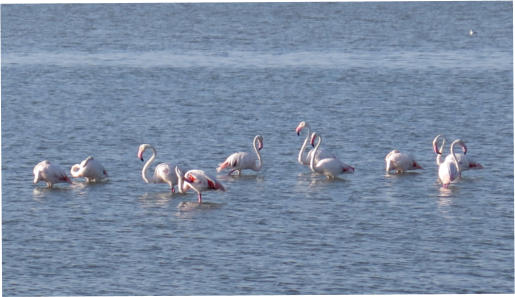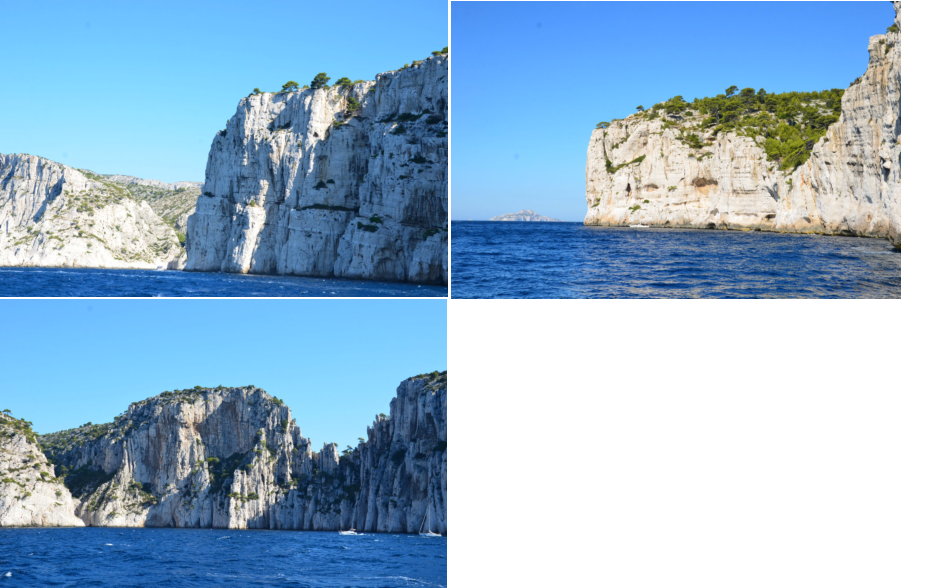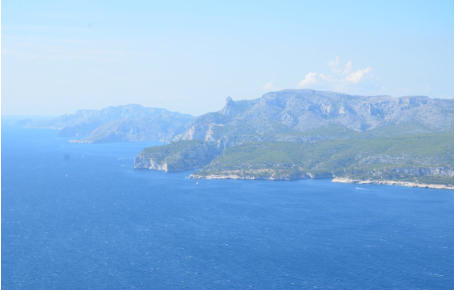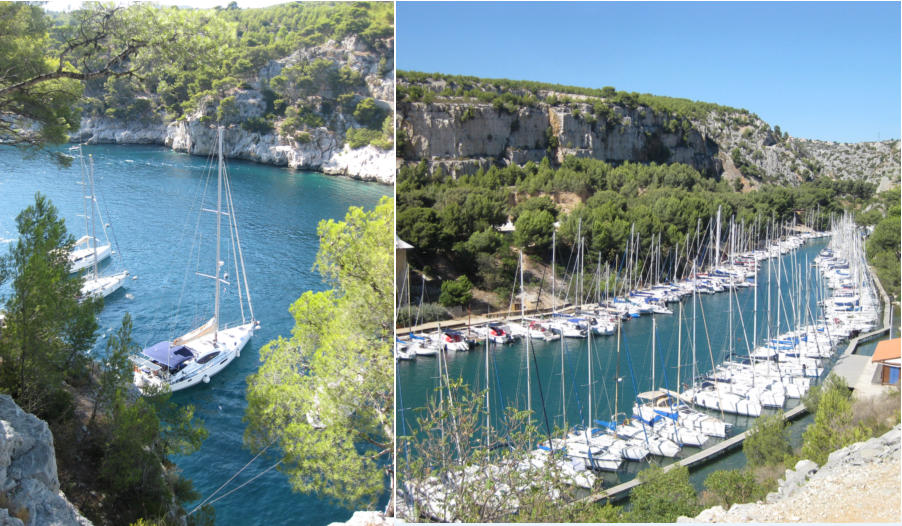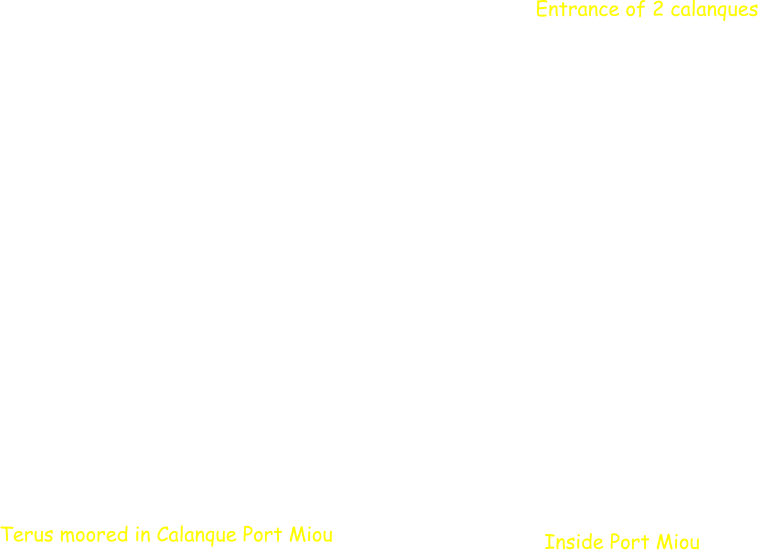

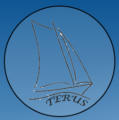

Our Wakes: 2015








Cap d’Agde to La Ciotat: (3 Augustus to 7 September 2015)
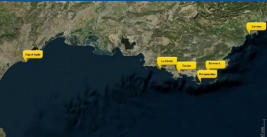
When we left the city of Cap d’Agde we entered known territory as we had navigated in those waters 30 years before. In the marina of Cap d’Agde a lot of fishermen were active preparing for
waters 30 years before. In the marina of Cap d’Agde a lot of fishermen were active preparing for the French Tuna Catching Championship. This year 38 boats participated in the contest.
the French Tuna Catching Championship. This year 38 boats participated in the contest. Originally, the competition was supposed to last 4 days, but as bad weather was announced, it was
Originally, the competition was supposed to last 4 days, but as bad weather was announced, it was shortened to 3 days. Each candidate was preparing his gear very seriously even if everything is
shortened to 3 days. Each candidate was preparing his gear very seriously even if everything is well described in the contest rules. Every morning 38 boats left the marina with 4 rods and 50 kg
well described in the contest rules. Every morning 38 boats left the marina with 4 rods and 50 kg of frozen sardines that served as bait. The bait was released in a well-defined area. I calculated
of frozen sardines that served as bait. The bait was released in a well-defined area. I calculated that together every day more than 1.5 tons of bait was going to be released in the sea.. Only
that together every day more than 1.5 tons of bait was going to be released in the sea.. Only sharks, red tuna and normal tuna were considered for the best fishermen but they were not
sharks, red tuna and normal tuna were considered for the best fishermen but they were not allowed to kill the red tuna. They had to measure the fish, take a photograph and then release it
allowed to kill the red tuna. They had to measure the fish, take a photograph and then release it back into the water.
back into the water. 
 We did not follow the competition as we decided to move on to our next marina. The first stop
We did not follow the competition as we decided to move on to our next marina. The first stop was Port Camargue located in the beautiful Camargue region. From the marina you can borrow
was Port Camargue located in the beautiful Camargue region. From the marina you can borrow bikes and visit the salt lakes and see the famous flamingos. The next day we sailed past the city
bikes and visit the salt lakes and see the famous flamingos. The next day we sailed past the city of Sete and the city of La Grande Motte. This city was built in the year 70 in the hope that
of Sete and the city of La Grande Motte. This city was built in the year 70 in the hope that tourists would stay in France instead of going further to Spain. From the sea it is easy to
tourists would stay in France instead of going further to Spain. From the sea it is easy to identify as it has numerous buildings in the shape of pyramids. After Port Camargue, we anchored
identify as it has numerous buildings in the shape of pyramids. After Port Camargue, we anchored in the gulf of St Marie just before entering the vicinity of Marseilles France's second city.The
in the gulf of St Marie just before entering the vicinity of Marseilles France's second city.The next day we went past Marseilles and entered the area of the Calanques National park. This park
next day we went past Marseilles and entered the area of the Calanques National park. This park located between Marseilles and La Ciotat is truly impressive. It is very lucky that the area has
located between Marseilles and La Ciotat is truly impressive. It is very lucky that the area has been well preserved and that no buildings have destroyed this unique landscape. The park covers
been well preserved and that no buildings have destroyed this unique landscape. The park covers an area of 8,500 Hectares of land and 43,500 hectares of sea, including several islands. See
an area of 8,500 Hectares of land and 43,500 hectares of sea, including several islands. See below a few pictures, as words cannot describe everything.
below a few pictures, as words cannot describe everything.

 waters 30 years before. In the marina of Cap d’Agde a lot of fishermen were active preparing for
waters 30 years before. In the marina of Cap d’Agde a lot of fishermen were active preparing for the French Tuna Catching Championship. This year 38 boats participated in the contest.
the French Tuna Catching Championship. This year 38 boats participated in the contest. Originally, the competition was supposed to last 4 days, but as bad weather was announced, it was
Originally, the competition was supposed to last 4 days, but as bad weather was announced, it was shortened to 3 days. Each candidate was preparing his gear very seriously even if everything is
shortened to 3 days. Each candidate was preparing his gear very seriously even if everything is well described in the contest rules. Every morning 38 boats left the marina with 4 rods and 50 kg
well described in the contest rules. Every morning 38 boats left the marina with 4 rods and 50 kg of frozen sardines that served as bait. The bait was released in a well-defined area. I calculated
of frozen sardines that served as bait. The bait was released in a well-defined area. I calculated that together every day more than 1.5 tons of bait was going to be released in the sea.. Only
that together every day more than 1.5 tons of bait was going to be released in the sea.. Only sharks, red tuna and normal tuna were considered for the best fishermen but they were not
sharks, red tuna and normal tuna were considered for the best fishermen but they were not allowed to kill the red tuna. They had to measure the fish, take a photograph and then release it
allowed to kill the red tuna. They had to measure the fish, take a photograph and then release it back into the water.
back into the water. 
 We did not follow the competition as we decided to move on to our next marina. The first stop
We did not follow the competition as we decided to move on to our next marina. The first stop was Port Camargue located in the beautiful Camargue region. From the marina you can borrow
was Port Camargue located in the beautiful Camargue region. From the marina you can borrow bikes and visit the salt lakes and see the famous flamingos. The next day we sailed past the city
bikes and visit the salt lakes and see the famous flamingos. The next day we sailed past the city of Sete and the city of La Grande Motte. This city was built in the year 70 in the hope that
of Sete and the city of La Grande Motte. This city was built in the year 70 in the hope that tourists would stay in France instead of going further to Spain. From the sea it is easy to
tourists would stay in France instead of going further to Spain. From the sea it is easy to identify as it has numerous buildings in the shape of pyramids. After Port Camargue, we anchored
identify as it has numerous buildings in the shape of pyramids. After Port Camargue, we anchored in the gulf of St Marie just before entering the vicinity of Marseilles France's second city.The
in the gulf of St Marie just before entering the vicinity of Marseilles France's second city.The next day we went past Marseilles and entered the area of the Calanques National park. This park
next day we went past Marseilles and entered the area of the Calanques National park. This park located between Marseilles and La Ciotat is truly impressive. It is very lucky that the area has
located between Marseilles and La Ciotat is truly impressive. It is very lucky that the area has been well preserved and that no buildings have destroyed this unique landscape. The park covers
been well preserved and that no buildings have destroyed this unique landscape. The park covers an area of 8,500 Hectares of land and 43,500 hectares of sea, including several islands. See
an area of 8,500 Hectares of land and 43,500 hectares of sea, including several islands. See below a few pictures, as words cannot describe everything.
below a few pictures, as words cannot describe everything.

